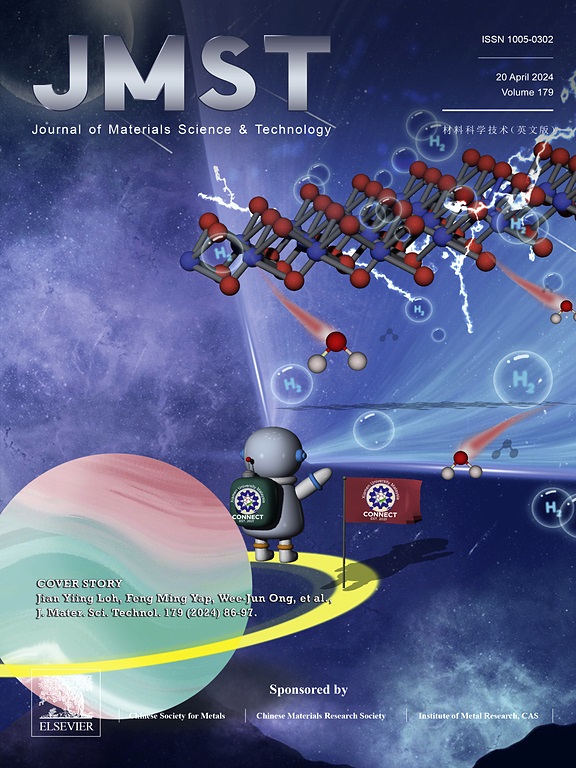Porous pure magnetic foam with engineered heterointerfaces for enhanced microwave absorption
IF 11.2
1区 材料科学
Q1 MATERIALS SCIENCE, MULTIDISCIPLINARY
引用次数: 0
Abstract
Despite significant progress in the structure and properties of porous absorbing materials, major challenges remain due to complex preparation technology, high production costs, and poor corrosion resistance. In this study, nanowires were used as the substrate, liquid nitrogen controls ice crystal growth orientation, and ammonia gas facilitates the generation of magnetic substances. The resulting pure magnetic porous foam (PMF) material exhibits enhanced performance in absorbing electromagnetic waves (EMWs) and improved corrosion resistance. The PMF's microstructure was analyzed for its dielectric and magnetic loss characteristics. The PMF combines a porous framework, nanoscale architecture, and exclusive magnetic components to create a lightweight foam absorbent material with enhanced magnetic dissipation capabilities. Among them, the Fe4N PMF demonstrates an impressive minimum reflection loss (RLmin) value of −66.8 dB at a thickness of 1.09 mm, exhibits an effective absorption bandwidth of 4.00 GHz, and shows exceptional corrosion resistance with a self-corrosion potential of −0.65 V. Moreover, the effectiveness of the Fe4N PMF in absorbing intelligent EMWs has been validated through radar cross-section (RCS) simulations. In summary, this study has developed electromagnetic wave-absorbing materials with slim profiles, lightweight properties, strong absorption capabilities, and excellent corrosion resistance. These characteristics make them highly promising for microwave absorption applications.

尽管在多孔吸波材料的结构和性能方面取得了重大进展,但由于制备技术复杂、生产成本高、耐腐蚀性差等原因,仍然存在重大挑战。本研究以纳米线为基底,液氮控制冰晶生长方向,氨气促进磁性物质的生成。最终得到的纯磁性多孔泡沫(PMF)材料在吸收电磁波(EMW)方面表现出更强的性能,耐腐蚀性能也得到改善。对 PMF 的微观结构进行了介电和磁损特性分析。PMF 将多孔框架、纳米级结构和独有的磁性成分结合在一起,创造出一种具有增强磁耗散能力的轻质泡沫吸波材料。其中,Fe4N PMF 在厚度为 1.09 mm 时的最小反射损耗 (RLmin) 值为 -66.8 dB,表现出 4.00 GHz 的有效吸收带宽,并且具有出色的耐腐蚀性,自腐蚀电位为 -0.65 V。此外,Fe4N PMF 吸收智能电磁波的有效性已通过雷达截面(RCS)模拟得到验证。总之,本研究开发的电磁波吸收材料具有纤薄的外形、轻质的特性、强大的吸收能力和出色的耐腐蚀性。这些特性使它们在微波吸收应用中大有可为。
本文章由计算机程序翻译,如有差异,请以英文原文为准。
求助全文
约1分钟内获得全文
求助全文
来源期刊

Journal of Materials Science & Technology
工程技术-材料科学:综合
CiteScore
20.00
自引率
11.00%
发文量
995
审稿时长
13 days
期刊介绍:
Journal of Materials Science & Technology strives to promote global collaboration in the field of materials science and technology. It primarily publishes original research papers, invited review articles, letters, research notes, and summaries of scientific achievements. The journal covers a wide range of materials science and technology topics, including metallic materials, inorganic nonmetallic materials, and composite materials.
 求助内容:
求助内容: 应助结果提醒方式:
应助结果提醒方式:


